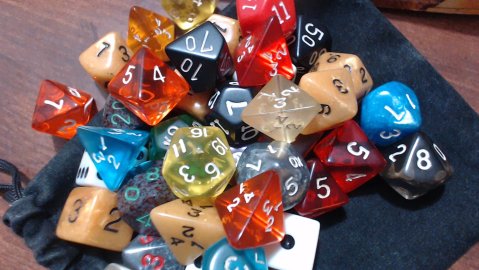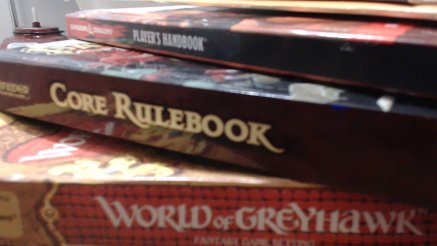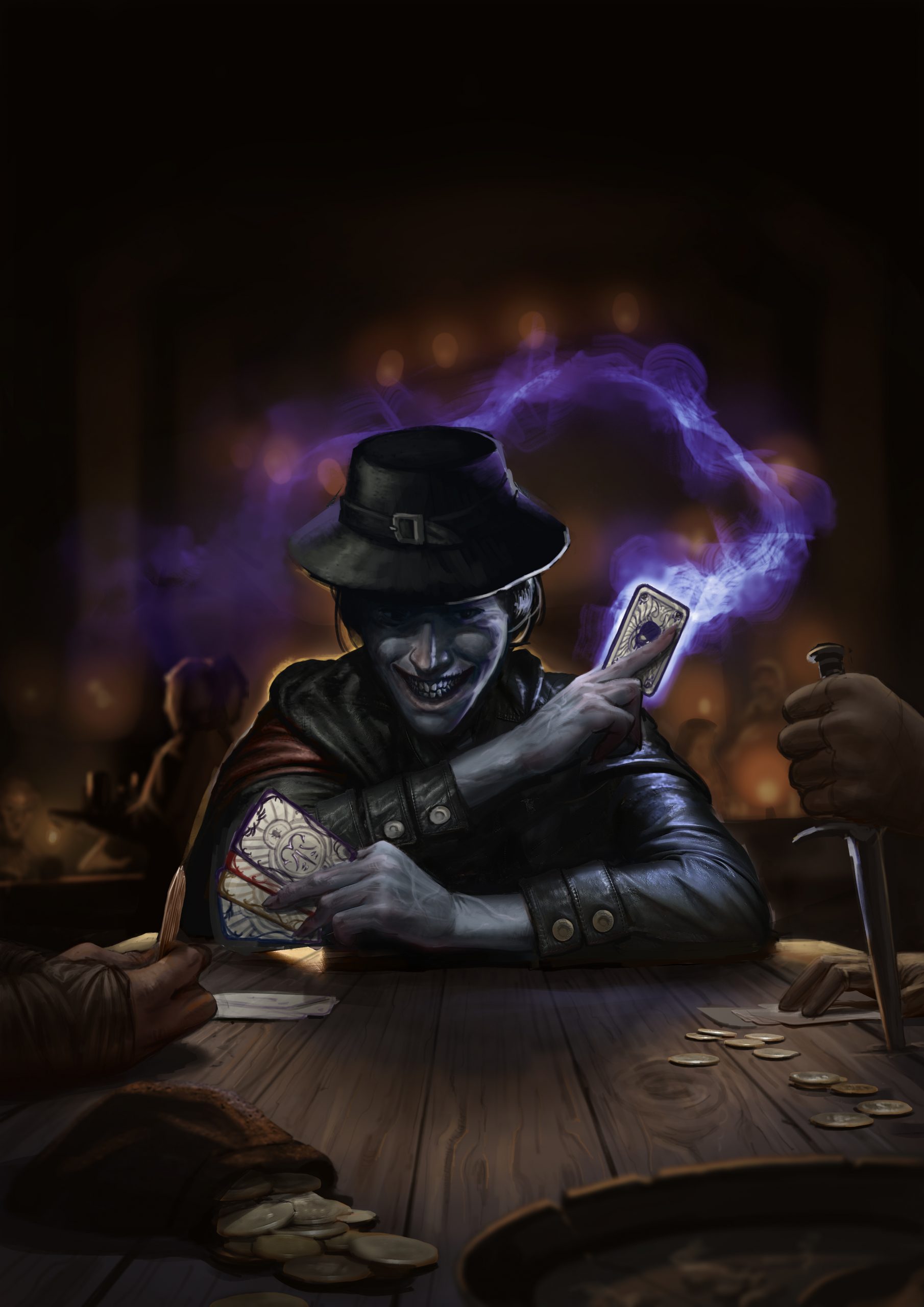D&Dizing Star Wars for 5th Edition Dungeons and Dragons 5th Edition
Hello Fellow Nerdarchists. Due to some issues with our site during our migration to a new server we lost some content. So if you read my article from last week this is going to be a redo and for that I apologize. With all the hype...
Multi-Class Character Builds in Dungeons & Dragons 5e (The Fighter)
Hello fellow Nerdarchests, Art here. I’m back with the third installment of my series Multi-Class Character Builds in Dungeons & Dragons 5e. If you missed my previous article on the Druid just click HERE.
Today we are going to march onto the battlefield with… The Fighter
First I’m going to take a some space and talk about the class as a whole. The Fighter is a very diverse and well thought out class in my honest opinion. Wizards of the Coast did a pretty good job with it as a base class and added a little bit of depth with the additions in The Sword Coast Adventure’s Guide with the addition of the Purple Dragon Knight. As far as scaling power levels go in reference to the higher level challenges, the Fighter scales quite nicely especially the Battle Master archetype.
Energize your Fifth Edition D&D character classes by playing across types
Hello, Nerdarchists! Have you played all the Fifth Edition Dungeons & Dragons character classes, and all the archetypes, and now you’re looking for something new? Are all your characters starting to feel the same? Do you need an idea to help kick start your creativity...
Dungeons and Dragons 5th Edition – Custom Background
 Happy Tuesday my fellow gamers. Today I would like to present you with a custom background in case you need more character building options for you Dungeons and Dragons game.
Happy Tuesday my fellow gamers. Today I would like to present you with a custom background in case you need more character building options for you Dungeons and Dragons game.
So here is the background Tribal. The outlander is the most adventurous background but to me it does not speek to one who was raised in a tribal culture but one who went out into the wilderness later in life. if you are playing a half orc or barbarian character you might very well have grown up in a tribe. If you are playing a more monstrous race or have something custom in your home brew campaign setting this background might suit you better than Outlander.
D&D 5th Edition – Tribal Background
Multi-Class Character Builds in Dungeons & Dragons 5e (The Cleric)
 One quick note, this article come after the release of Sword Coast Adventures Guide, so my article will contain builds including content from that book as well. If you missed my last article on the Bard click HERE to take a look. Today we are going to prey to the gods with… The Cleric
One quick note, this article come after the release of Sword Coast Adventures Guide, so my article will contain builds including content from that book as well. If you missed my last article on the Bard click HERE to take a look. Today we are going to prey to the gods with… The Cleric
I’d like to start with a quick overview of the Cleric so I can clear up a few issues with the class as a whole.
To start off, the Cleric as a class falls off at eighth level due to the class features only coming from the domains themselves. There is no base class feature at later levels. Also, the ability to cast Revivify as a third level spell removes most of the need for Raise Dead. With this I feel that the Cleric when multi-classed with any other primary spell caster is the best option sense the multi-class spell slot chart on page 165 of the Player’s Guide still allows for the same amount of spell slots needed to cast higher level heals and party buffs. With that explained let’s get started.
Multi-class Character – The Cleric
D&D Alignments: Has Chaotic Neutral gotten a bad rap?
 Hello Nedarchists! Today I want to take a look at the Dungeons & Dragons Alignment system, specifically the Chaotic Neutral alignment.
Hello Nedarchists! Today I want to take a look at the Dungeons & Dragons Alignment system, specifically the Chaotic Neutral alignment.
The Alignment system in some form or other has been part of the D&D experience since the beginning, all the way back in 1974 with the first edition of the game. Even in the early days, Alignments sometimes brought about a predicament for players and dungeon masters alike as Alignments could be understood in a rather subjective fashion, giving rise to lots of different interpretations.
The occasional troubles have not abated to this day. Some dungeon masters do away with Alignments altogether, or at least ignore them. Some players consider Alignments a burden upon their characters, while other players enjoy using Alignments as a guidepost for their creations.
Dungeons and Dragons – Descriptive Combat Using Real World Fighting Techniques
 Hello again my loyal Nerdarchists. As I have mentioned on numerous videos I have done years worth of combat with the historical fighting style of the German Longsword. Having knowledge of how an actual sword fight can go can make describing combat scenes and maneuvers far more interesting and realistic.
Hello again my loyal Nerdarchists. As I have mentioned on numerous videos I have done years worth of combat with the historical fighting style of the German Longsword. Having knowledge of how an actual sword fight can go can make describing combat scenes and maneuvers far more interesting and realistic.
Over the years of study I have used several historic manuals. You can use the Knightly Art of the Sword by Ringeck. This is a great book that not only has the text with corresponding artwork showing the sword-work in motion, but it also has the original German so you can see how it translated. And if you are fluent in German you can read it as it was originally written.
How do You Use Descriptive Combat in Dungeons and Dragons?
Witch Hunter, The Movie, The Nerdarchy Game and the Backstory
 Fear not loyal Nerdarchist there will be no spoilers here- I haven’t even had a chance to see the movie yet! Then what, pray tell is this article about you ask? Tomorrow night at (or around) 10:30 EST, Halloween, Nerdarchist Dave’s running an eerie Dungeons and Dragons Witch Hunter game live on Google Hangout for myself, Nate the Nerdarch, as well as friend, and frequent guest poster, Art Wood.
Fear not loyal Nerdarchist there will be no spoilers here- I haven’t even had a chance to see the movie yet! Then what, pray tell is this article about you ask? Tomorrow night at (or around) 10:30 EST, Halloween, Nerdarchist Dave’s running an eerie Dungeons and Dragons Witch Hunter game live on Google Hangout for myself, Nate the Nerdarch, as well as friend, and frequent guest poster, Art Wood.
Our characters were created using the Witch Hunter (click link to download PDF of the class!) custom character class written by Critical Role’s Matthew Mercer. It’s a full 20 levels of a character class with three distinct orders to choose from, The Orders of the Ghostslayer, Profane Soul, and the Mutant. The three of us will be playing each of the orders as 15th level characters. Our intrepid Dungeon Master Dave has given us a 30 point stat buy and 6,000 gp to spend on starting equipment using the gold costs out of the Dungeon Master’s Guide for magic items.
Dungeons and Dragons 5th Edition- Witch Hunter Class
Yours truly will be playing a dwarf following the Order of the Mutant. Below is the backstory for Egrec Rune Hammer:
Multi-Class Character Builds in Dungeons & Dragons 5e (The Bard)
 Hello fellow Nerdarchests, Art here. I’m back with the second installment of my series Multi-Class Character Builds in Dungeons & Dragons 5e. If you missed my previous article on the Barbarian just click HERE!
Hello fellow Nerdarchests, Art here. I’m back with the second installment of my series Multi-Class Character Builds in Dungeons & Dragons 5e. If you missed my previous article on the Barbarian just click HERE!
Today we are going to be singing along with… The Bard
Allot of you may think of the Bard as a musical little nuisance at the game table from previous D&D editions. In 5th Edition the Bard has taken quite a dramatic turn. They have become both a healer as well as one of the highest damage dealers at lower levels. They are in my opinion the most versatile class in the game by far.
How do You Play a Bard?
Dungeons and Dragons 5th Edition – Custom Race – Rodent-kin
 Hello fellow Nerdarchists. Ted here and it has been a while since I made a custom race for Dungeons and Dragons 5th Edition. So today I wanted to make one for you.
Hello fellow Nerdarchists. Ted here and it has been a while since I made a custom race for Dungeons and Dragons 5th Edition. So today I wanted to make one for you.
So I present you with one race with two cool and distinctive sub-races. The rodent-kin are small around the size of Gnomes and Halflings. Some believe that these creatures have ancestry in lycanthropy, but others believe that they came out of the deep Feywild. However they came to be they are here and their curiosity about the bigger folk is certain.
Will You Play a Rodent-kin in D&D 5th Edition
Multi-Class Character Builds in Dungeons & Dragons 5e (The Barbarian)
 Hello fellow Nerdarchists, some of you might know me from the Nerdarchy YouTube channel, my name is Art Wood. I’ve been privileged enough to have been asked by the guys to write a few articles for you regarding multi-class character builds in Dungeons & Dragons 5e.
Hello fellow Nerdarchists, some of you might know me from the Nerdarchy YouTube channel, my name is Art Wood. I’ve been privileged enough to have been asked by the guys to write a few articles for you regarding multi-class character builds in Dungeons & Dragons 5e.
Now, I don’t claim to be an expert by any means, but I do know what’s worked for me as far as helping my friends build awesome characters and other players as well. I’m going to address this series by doing one article at a time focusing on each character class one by one as they appear in the Player’s Guide. I also want to point out I will not be focusing on character race or backgrounds, as I feel those are more for a “role-play” choice, however I do know that some races lend themselves to be a bit more potent with certain builds. Backgrounds however are mostly a player and role-play decision.
So, let’s get started with… The Barbarian
Afraid you’re a bad Dungeon Master? Do it anyway
 So, you’ve run a couple of Dungeons & Dragons games as dungeon master, but you’re not feeling great about it. The sessions seemed to drag. You felt like you were always flipping through the Player’s Handbook.
So, you’ve run a couple of Dungeons & Dragons games as dungeon master, but you’re not feeling great about it. The sessions seemed to drag. You felt like you were always flipping through the Player’s Handbook.
A couple of characters bickered and you couldn’t do anything about it. Maybe there were even technical issues if you gamed online, or if you were at a table, maybe the chips tasted stale and the soft drinks flat. Maybe, dread of all dreads, a total-party-kill took place. Against flumphs.
In other words, the games sucked, and you feel like you’re to blame for all of it.
Dungeons and Dragons – Player Tips – Preparing Your Background
5th Edition Dungeons and Dragons makes making background choices easy. But the thing to remember is that characters are more than the mechanics on a character sheet.
In order to make your character enjoyable during the game you need to make them feel real. If your group is doing a session zero you can figure out what everyone is playing and you can begin linking your stories together.
Whats Your Backstory in Dungeons and Dragons
Dungeons and Dragons Player Tips – Playing Your Flaws
 Hello Fellow Nerdarchists. When you break down and look at character concepts 5th edition not only has the system in place that each character has in their traits a flaw as well as the standard stat array has a low stat.
Hello Fellow Nerdarchists. When you break down and look at character concepts 5th edition not only has the system in place that each character has in their traits a flaw as well as the standard stat array has a low stat.
These features can be considered by many a problem to avoid, while others see these as awesome role playing situations and awesome parts of the story to make the session memorable.
Player Tips – Play up Your Flaws as much as You do Your Strengths
Dungeons & Dragons 5th Edition Optional Warforged Builds
 Most people I have spoken with feel that the warforged presented in the Unearthed Arcana: Eberron is lacking. So you can choose of of these options with your Dungeon masters approval of course. I think each of these grants a little extra flavor to the race and balances them nicely in comparison to the other races in the players handbook. A big thank you to Art Wood for coming up with these for us.
Most people I have spoken with feel that the warforged presented in the Unearthed Arcana: Eberron is lacking. So you can choose of of these options with your Dungeon masters approval of course. I think each of these grants a little extra flavor to the race and balances them nicely in comparison to the other races in the players handbook. A big thank you to Art Wood for coming up with these for us.
Optional Warforged Types…
Mithral Body (Warforged Only): Your body is composed of Mithral plating and wood Making them light and agile. You gain +1 to your Dexterity.











